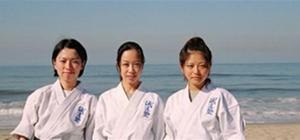The point of any workout is to stress your body and initiate an adaptive training response. Period.
What are appropriate levels of stress necessary to achieve the adaptive response? In terms of the cardiovascular system, studies have shown that it usually takes about two minutes to get the heart rate into the training zone. Once there, the heart shows an adaptive response after five more minutes of training in the zone. Total minutes needed to get an adaptive response from your heart? Seven.
That's the floor of the adaptive response component. What's the ceiling, meaning, beyond what point is any additional work not producing an adaptive response? Twenty-five minutes, according to the sports physiologists.
So a workout in your training zone (anywhere from 60 to 100% of your maximum heart rate) lasting anywhere between 7 and 27 minutes is sufficient to maximize your heart's adaptive response. Do this twice or three times a week and your fitness will soar without eating into your already crammed schedule.
At Seido we use these parameters to guide our conditioning program. We employ variety in our training sessions to keep it interesting and to keep stimulating adaptive responses. In some classes we use the Tabata Protocol, which calls for maximum exertion for 20 seconds, rest for 10 seconds, repeat for 5-8 sets. Basic calisthenics like the squat thrust + knees raises + multiple punches serve to raise the level of exertion to maximum. These movements are easily learned but very demanding on all the major muscle groups. Done "all out" it'll leave you gasping for breath. Doing the "20-10s" twice a week is enough to get an optimal adaptive response, meaning it costs the least in terms of time spent on it and produces the most in terms of physiological benefits.
Of course, we also train basic karate techniques, such as punches, kicks and grabs, as well as all the forms and partnered drills. Once the adaptive response portion of a class is finished we move to these karate techniques and do them at a slower, more meditative pace. The purpose of going slow with the technique practice is allows the trainee to model biomechanical efficiency, which then transfers to "real life" action. We also train on the heavy bag to model biomechanical effectiveness. We want you to feel that any technique you practice will have some pop in it while going about it in a way that will enhance you mastery and elevate your spirit.
Just updated your iPhone? You'll find new emoji, enhanced security, podcast transcripts, Apple Cash virtual numbers, and other useful features. There are even new additions hidden within Safari. Find out what's new and changed on your iPhone with the iOS 17.4 update.




























Be the First to Comment
Share Your Thoughts